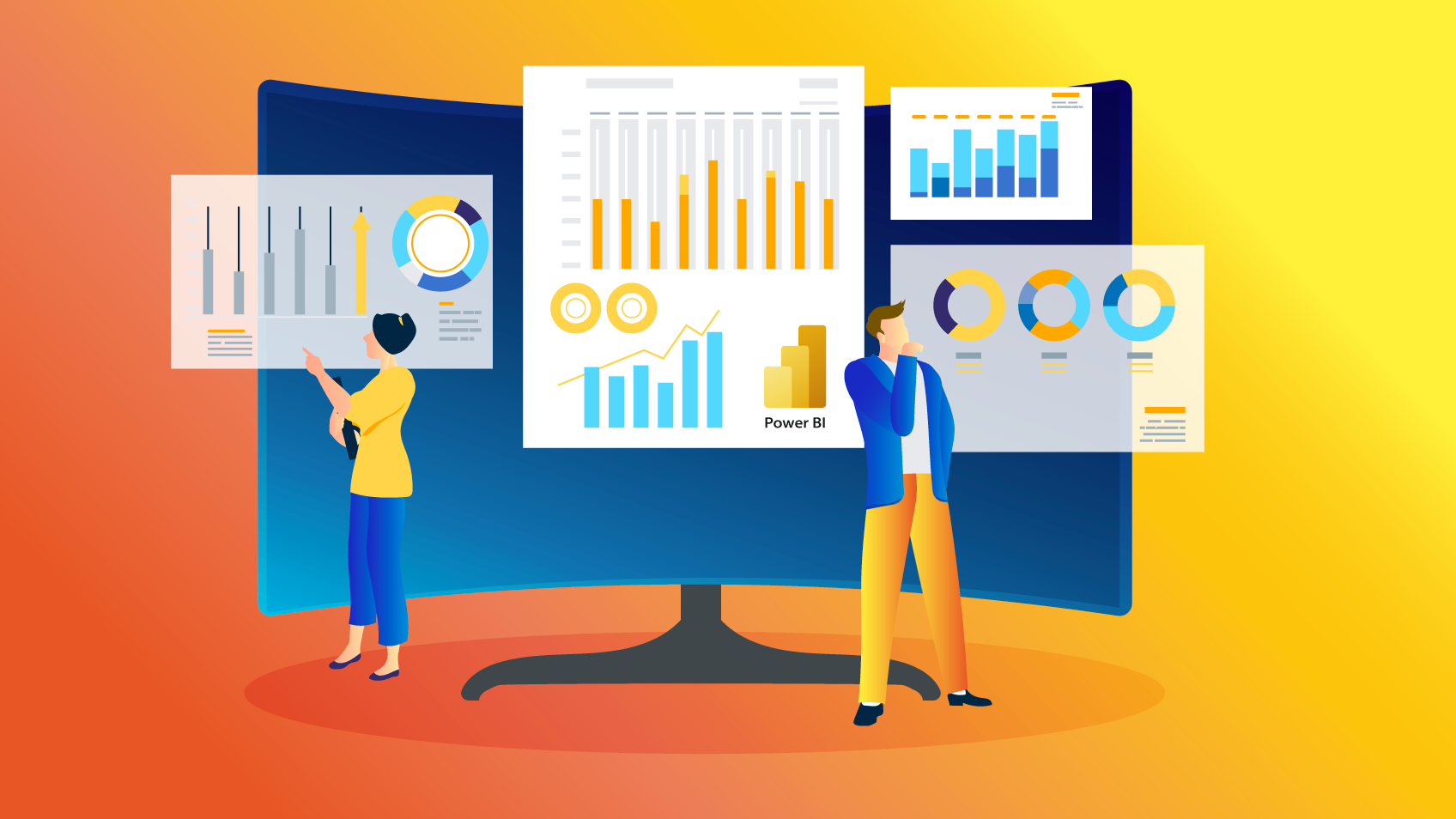Data is a resource which has become an integral element of the business world. Data can be utilized to determine the fate of an organization. Power BI, Microsoft Fabric and other tools that are powerful are utilized by companies to unleash the full potential of their data. These platforms are at the core of business intelligence. They also, when combined with Azure Data Factory they become a formidable force to make data-driven decisions and analytics.
Power BI, Your Business Intelligence Companion
Power BI, a service of Microsoft, is a comprehensive business intelligence software designed to help organizations visualize and share information from their data. It allows users to create interactive dashboards and report by transforming data into useful insight.

If you’re a small start-up or a big business, Power BI adapts to the needs of your business. It works with a variety of sources of data to make it simpler for users to integrate the information from various platforms and databases. The intuitive drag and drop interface allows even non-technical people to produce useful reports.
Power BI supports real-time processing of data to ensure that you are always updated with the most recent data. It offers a wide array of graphs and visualizations that allow the data to be presented in a digestible and appealing manner. The capability to share and collaborate reports with colleagues improves decision-making and creates a culture of data-driven decision-making in your workplace.
Microsoft Fabric: Weaving Data Excel
Microsoft Fabric is the underlying framework that connects and manages the information from several Microsoft services. Fabric is the layer that converts your data an easily accessible entity. This lets businesses gain insight quickly.
Microsoft Fabric is the foundation of the integrity of data and its consistency as companies deal with ever-increasing amounts of data. It is integrated with a variety of services, ranging from Azure Data Lake Storage and Azure SQL Data Warehouse, to Power BI and more. The platform’s interconnectivity will ensure that data flows and insights are available from multiple sources.
The range of Microsoft Fabric is evident in its data transformation capabilities. It can be used to manage data to prepare it for analysis and to ensure that it conforms to the policies of data governance of your organization. Microsoft Fabric is the software that makes sure your data is reliable and accurate. It is also prepared for analysis.
Azure Data Factory: the Gateway to Data Transformation
Azure Data Factory is another essential component in the modern business intelligence landscape. It is a cloud-based solution that allows you to manage and schedule data-driven processes. Azure Data Factory allows for meaningful insights by orchestrating data transformation and movement.
Azure Data Factory has many strengths, including its capability to connect to diverse data sources. It doesn’t matter if your data is located in the cloud or in your premises You can connect it easily to provide a comprehensive picture of your data ecosystem. The platform can handle batch processing streaming of data in real-time and analytics based on big data, making it a good fit to a range of use cases.
Azure Data Factory provides a visual interface for the process of creating data pipes. You don’t have to be an expert in coding to design, schedule, or monitor data workflows. This lets business users manage their data integration processes and provides the means for self-service data preparation.
The Power Trio: Power BI, Microsoft Fabric, and Azure Data Factory
If Power BI is combined with Microsoft Fabric and Azure Data Factory They form a dynamic trio which can transform data analytics. How do they work together?
1. Data Integration Azure Data Factory connects to an array of data sources, guaranteeing that your data is readily accessible. This data integration capability feeds into Microsoft Fabric, which orchestrates data across different services. This ensures that your data is well-organized, cleaned, then it’s ready for Power BI analysis.
2. Microsoft Fabric’s Data Transformation feature is crucial for meeting your analytical requirements. Fabric makes sure that your data is prepared for analysis for cleaning or transforming data.
3. Power BI is able to be a part of your data after it is analyzed and refined. Power BI enables you to make visually appealing reports and dashboards that make complex data understandable. You can then communicate these insights to encourage your team members to make decision-based on data.
4. Scalability: Azure Data Factory scales effortlessly to handle growing volume of data, and the combination of Power BI and Microsoft Fabric ensures that your data stays stable and reliable when your business grows.
5. Power BI & Azure Data Factory can provide real-time information which is crucial for a fast and efficient decision making.
Also, you can read our conclusion.
To remain competitive in the business intelligence market businesses must be able leverage data efficiently. Power BI, Microsoft Fabric and Azure Data Factory are a powerful trio that can aid you in taking your business intelligence to new heights. This trio will enable you to create stunning visuals, maintain accuracy of data and streamline your data workflows. Unlock your data’s potential by utilizing business intelligence.
